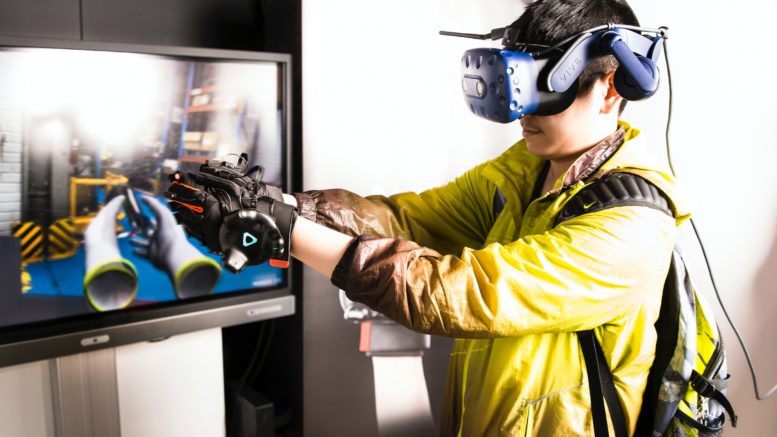What comes to your mind when you hear the words “virtual reality”?
Is virtual reality all about gaming? If you think you know virtual reality, we have gathered some of the interesting facts about VR.
Idea Started Centuries Ago
It may be puzzling for some, but virtual reality is not a modern-day invention. If we look back to its origin, the idea of virtual reality started in 1837 while the headset design was patented 6 decades ago.
Although it was not as near as the virtual reality we know today, the idea and working principle are the same and have been elaborated on over the years. Sir Charles Wheatstone would be surprised how his idea is still used after 2 centuries.
In 1962, Morton Heilig patented the first virtual reality headset and named it “Telesphere Mask.” As for the modern term for virtual reality, Jaron Lanier coined it in 1987.
Virtual Reality May Cost A Fortune
The prices of virtual reality headsets may be a bit steep. Most gamers know that VR gaming is more expensive than any gaming console before it. The price difference may lie in how it is developed.
The Virtual Reality industry uses high-technology and specialists in developing them. Including the production of their headsets costs a fortune. Although the production of a virtual reality environment remains costly, the prices for VR headsets started to decline as more companies are developing them.
Before, VR was only developed by reputable tech companies. Now, more companies can apply virtual reality to their brand and marketing. Moreover, virtual reality headsets were only affordable to a narrow range of customers. Today, the number of consumers has changed; several companies are producing and competing in providing the best VR experience and headsets.
You can choose and find the best virtual reality headsets within your budget to experience virtual reality.
Low Budget: These headsets cost $20 to $50. You may not have the best experience with mobile-compatible VR headsets. The virtual reality experience in low-budget headsets uses 2D assets in a 3D environment. It won’t give you a good sense of immersion. Google Cardboard is an example of this price range.
Medium Budget: These VR headsets have more spatial audio and interactivity, immersing the users more in the virtual world than the low-budget headsets. Examples of this price budget are Zeiss VR One and Samsung Gear VR.
High Budget: These VR headsets tethered. It offers scripted experiences with game-like productions. Users can explore the 3D environment using these headsets. Examples of headsets in this price range are Oculus Rift and HTC Vive.
But, VR headsets are not only used for gaming. This technology is used in several aspects. Thus, when purchasing a VR headset or goggles, a reasonable price is not an advantage but a key argument when deciding which to buy.
It’s Not All About Gaming
Yes, you read it right. VR headsets are not all about gaming. Most people think that virtual reality is only for gaming. Although it has been widely used in the gaming industry, it is not only for games and entertainment.
One of the first developments in the virtual environment was as a pilot training simulator. This is one of the interesting facts about virtual reality. It makes us realize how vast technology applications are.
Since then, VR technology has advanced and expanded its utilization. Virtual reality has been applied across different fields, it includes:
-
Education: Students can have virtual field trips. You can take them back in time to different eras, museums, or even the solar system!
-
Fashion: VR is less known to be used in the fashion industry. They are used for virtual simulations of store environments. Retailers don’t have to build the store layout. Instead, they use virtual reality. Moreover, some popular brands use VR to offer a 360-degree experience of fashion shows. It allows their customers to try on their clothes virtually.
-
Medical Training: Medical students can practice surgeries and procedures with virtual reality. Its interactive nature allows a consequence-free environment. They can develop skills without the risk of inflicting harm to patients.
-
Mental Health: It is a primary method to treat post-traumatic stress disorder. The treatment is known as Virtual Reality Exposure Therapy (VRET). Patients can re-enact traumatic events to heal and come to terms with the event. Other than that, it is an effective method to manage depression, anxiety, and phobias.
-
Military: Military has adopted the use of VR in their training. Since VR gives visual and sound experience, the military can experience a huge range of simulations. They can safely replicate dangerous situations to prepare and train soldiers. Moreover, as mentioned, it is included in treating PTSD for soldiers.
-
Sports: Coaches and players can train more efficiently with virtual reality. It is used as a training aid to help coaches measure athletic performance. Moreover, players can analyze techniques and improve their abilities.
It’s amazing how virtual reality is utilized in almost all industries.
Major Brands of Different Industries are Investing in VR
It’s surprising how several major brands are investing in virtual reality. Several of these brands are developing the technology for themselves. Since 2015, 75% of Forbes World’s Most Valuable Brands have innovated with virtual reality. As of today, VR has been applied in several industries, and the tech sector leads in adopting virtual reality.
Moreover, nearly 50% of consumers prefer buying from a retailer using VR experiences for marketing and branding. Thus, it would not be a surprise if more brands invest in VR technology.
Virtual Reality Cannot Replace Real Life
Looking into a virtual reality headset is a surreal experience. It is pretty realistic that it almost feels like you are in the place you’re seeing or are part of the activity in front of you. But, “almost” is the keyword here. Virtual reality is far from replacing real-life experience.
Virtual reality is intended to enhance real-life situations. Its applications to different fields prove its importance in enhancing real experiences. Businesses can showcase their products or services in a 3D environment to their target consumers. Moreover, people can train and re-enact situations without risking other people or themselves.
Final Thoughts
There are countless facts about virtual reality, and these are a few surprising ones. It’s great to know more about this technology because it may be part of our everyday lives in the near future.
Virtual reality was first imagined for gaming. It then slowly branched out to medical applications and all the way to marketing. The applications and possibilities became endless!
What would you do with virtual reality?





